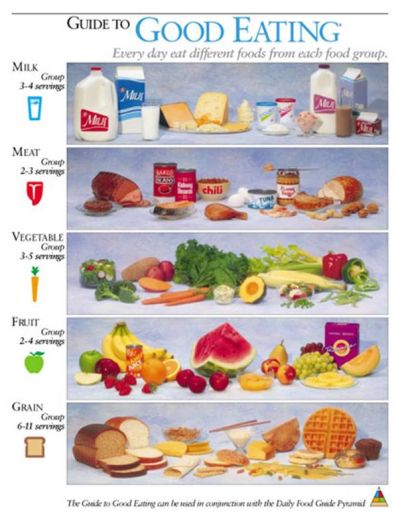23 August 2007
By: Joan Lyon. Nutritionist, United States Department of Agriculture, Alexandria, VA.
We all need nutrients to live. What are they, and how do we obtain them?
A hamburger or a salad? A baked potato or French fries? A milkshake or orange juice? A candy bar or an apple? We have to make choices about what we eat every day.
This introduction to a healthy diet explains which foods contain certain macronutrients (water, carbohydrates, proteins, and fats) and micronutrients (vitamins and minerals).
New food guidelines and the food pyramid that accompanies them emphasize that we should eat more fruits, more vegetables, and more whole grains than we typically do now. We should also avoid lots of sugar, salt, and certain types of fats. We should exercise regularly.
Evidence continues to build that eating certain types of foods protects people from cancer, heart disease, obesity, diabetes, weak bones, and other health problems. Eating the wrong kinds of foods, on the other hand, causes harm to your body.
Weight control
Calorie. A unit that measures the amount of energy released by food as it is digested by the body.
Nutrient. A substance, such as protein or a mineral, that living things need for proper growth and good health. Plants obtain minerals and other nutrients from the soil. Animals get nutrients from the food they eat.
Nutrition. The process by which a living thing takes in food and makes use of the nutrients.

"There is an energy equation.The calories you take in need to balance the amount of energy you expend in terms of physical activity and exercise, or you will end up gaining weight. You need to make your calories work for you"
The best way to stay healthy is to eat foods that are packed full of nutrients.
Instead of the five servings of fruits and vegetables that were previously recommended, the new guidelines suggest that adults eat even more than that; 2 cups of fruit and 2 ½ cups of vegetables each day.
Children should adjust the amounts of fruits and vegetables based on energy needs and size.
Individuals 9 years old and above should drink three cups of low-fat or fat-free dairy products each day and eat lots of whole grains. Brown rice and whole-wheat bread, for example, are better choices than white rice and plain bagels.
Whole grains are essential because they do not go through all the processing that strips fiber agnesium, calcium, and other nutrients from many starchy foods. Look on labels for ingredients such as whole oats and whole wheat.
Young people between the ages of 4 and 18 years should get between 25٪ and 35٪ of their calories from fat, the experts state. Most of this fat exists in nuts, vegetable oils, and fish. You should avoid a type called "trans fats," which appears on labels for cookies, crackers, and other foods as "hydrogenated" or "partially hydrogenated" oils.
As far as exercise goes, the document recommends 30 to 60 minutes of activity for adults on most days of the week, and at least 60 minutes of exercise for kids every day.
References
http://www.sciencenewsforkids.org/articles/20050420/Feature1.asp
Passent Hassan